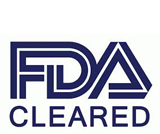About LeEject

Our mission is to create a safer workplace and reduce
needlestick injuries…
The prevention of needlestick injuries is important for any dental professionals since injuries can lead to contracting devastating diseases. Although significant time and resources are spent improving dental treatment productivity, efficiency, and the success rates, the problem of needlestick injuries is largely ignored. However, it is as important or even more urgent.
After the Needlestick Safety and Prevention Act of 2000, recent reports have shown a significant decrease in needlestick injuries in healthcare facilities including hospitals and nursing homes. But, to my knowledge, needlestick injuries in dentistry are increasing.
Ms. Karen Daley, who was instrumental in passing the law, sustained a needlestick injury in 1998 at a large teaching hospital. As she was disposing a butterfly needle into a sharps container, the sharps container was full and there was a needle sticking out. Needless to say, she became sick and found out later that she was both hepatitis C and HIV positive. She turned her energy to prevent needlestick injury for nurses and went to the Massachusetts legislature and Congress.
According to the Washington State Department of Labor and Industries State Fund reports from 1995 to 2001, there were 894 legitimate needlestick injuries among dental professionals. There was evidence of Hepatitis B in six people, Hepatitis C in 30 people, HIV in three people, and both Hepatitis B and C in two people. (Shah, S. et al., in BMC Public Health 2006, 6:269)
Who were these unfortunate people? As a part of the dental community, what can we do to help these victims? What did we learn from these accidents? What can we do to prevent these accidents?
I have sustained needlestick injuries myself and have watched others go through the same experience. This is why I took time to come up with a safer dental syringe and needle system.
If you are not aware of the potential danger, then you cannot protect yourselves. Please share the Youtube link of needle stick injuries with as many other dental professionals as possible.
I am creating a blog for anyone to share needlestick injury experiences. If there is legitimate evidence of acquiring diseases through needlestick injuries, then hopefully we can all come together to help these victims. I intend to help the victims with the profits from the LeEject 2 system sales.
English Version Video
Sincerely,

Alexander Lee, DDS
Diplomate, American Board of Oral & Maxillofacial Surgery
The LeEject dental safety system was created after the inventor himself sustained needle stick injuries.
| 1. | Cost and Frequency | ||||
| |||||
| 2. | Needlestick Diseases | ||||
| According to the CDC, 80% of occupationally acquired diseases in the US are transmitted through needlestick injuries. | |||||
| 3. | Cost of a Needlestick | ||||
| One high-risk accidental needlestick injury costs on average $5,144. (Frost & Sullivan Economic Model, Version 3.1, 2007) | |||||
| 4. | Needlestick Injuries in Dentistry | ||||
| About 20 percent of the needlestick injuries are sustained by dental professionals. (BMC Public Health 2006, 6: 269) | |||||
| 5. | Who Gets Injured Most? | ||||
| Dental assistants are ten times more likely to get needlestick injuries than dentists. (BMC Public Health 2006, 6: 269) | |||||
| 6. | Current Situation | ||||
| CDC and OSHA banned recapping and one hand scoop technique in medicine and nursing, but CDC and OSHA still recommend one hand scoop technique to recap needles in dentistry. |

